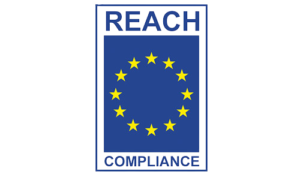“Going Green with PVC: Embracing REACH-Compliant Solutions”
In today’s rapidly evolving industrial landscape, sustainability has become a paramount concern. Businesses worldwide are actively seeking ways to reduce their environmental impact while maintaining product quality and performance. One area where this endeavor has made significant strides is in the realm of PVC (Polyvinyl Chloride) compounds.
PVC compounds are widely used in various industries, including construction, automotive, healthcare, and more, owing to their versatility, durability, and cost-effectiveness. However, concerns about the environmental and health impacts of PVC have spurred the development of Reach-compliant PVC compounds. In this blog post, we will explore what Reach compliance means, the importance of Reach-compliant PVC compounds, and their benefits for both businesses and the environment.
What is REACH Compliance?
REACH stands for Registration, Evaluation, Authorization, and Restriction of Chemicals. It is a comprehensive regulation established by the European Union (EU) with the primary goal of safeguarding human health and the environment from the potential risks posed by chemicals. Reach compliance is mandatory for companies manufacturing or importing chemicals into the European market.

Under Reach, companies are required to:
- Register chemical substances they manufacture or import in volumes above one ton per year.
- Evaluate and assess the safety of these substances.
- Obtain authorization for substances of very high concern.
- Impose restrictions on certain hazardous substances.

Some Categories Restricted under REACH
These restrictions aim to control or limit the use of hazardous substances and protect people and the ecosystem. As of my last knowledge update in September 2021, here are some examples of chemicals and substances that were restricted or subject to authorization under REACH:
Some chemicals that are identified as having particularly hazardous properties, such as carcinogenicity, mutagenicity, or reproductive toxicity. Such substances may be subject to authorization.
Persistent, Bioaccumulative, and Toxic (PBT) Substances: PBT substances are chemicals that are persistent in the environment, bioaccumulate in living organisms, and exhibit toxic properties. Many PBT substances are subject to restrictions or authorization.
Carcinogenic, Mutagenic, or Reprotoxic (CMR) Substances: Chemicals that are known or suspected to be carcinogenic, mutagenic, or toxic to reproduction may be subject to restrictions under REACH.
Substances Used in Consumer Products: REACH imposes restrictions on certain chemicals that are commonly found in consumer products, such as toys, textiles, and electronics, to protect consumers, particularly children.
Substances Harmful to the Environment: Some chemicals that pose risks to the environment, including aquatic organisms, may be restricted to prevent their release into the ecosystem.
Endocrine Disruptors: Chemicals that interfere with the hormonal systems of humans and wildlife may be subject to restrictions or authorization under REACH.
Lead and Its Compounds: Lead is a restricted substance under REACH due to its well-documented adverse health effects, especially in children. Restrictions on lead apply to various consumer products.
Phthalates: Certain phthalates, which are commonly used as plasticizers, are restricted in toys and childcare articles due to concerns about their potential health effects, especially on children.
Chromium VI Compounds: Chromium VI compounds are used in various industrial processes and are restricted in certain applications, such as in the manufacture of leather products and in corrosion protection coatings.
- Nonylphenol Ethoxylates (NPEs): NPEs, which are used in textile and leather processing, are restricted due to their endocrine-disrupting properties and their adverse effects on aquatic environments.
Why choose REACH-Compliant ?
Environmental Impact Reduction:
Reach-compliant PVC compounds are formulated to meet stringent environmental standards. They are produced using lead-free and phthalate-free formulations, which significantly reduce the release of harmful substances into the environment. This is crucial in addressing the sustainability concerns associated with traditional PVC compounds.
Health and Safety:
Reach-compliant PVC compounds undergo rigorous testing to ensure they do not contain harmful substances that can harm human health. This makes them a safer choice for applications where contact with PVC materials is common, such as in the medical and food industries.
Global Market Access:
Complying with Reach regulations not only allows companies access to the EU market but also enhances their competitiveness in a global context. Many other countries and regions are adopting similar chemical safety regulations, making Reach compliance a valuable asset for international trade.
Long-Term Viability:
As sustainability becomes increasingly important to consumers and regulators, businesses that adopt Reach-compliant PVC compounds position themselves for long-term success. These compounds align with evolving environmental and health standards, reducing the risk of costly regulatory changes down the line.
In a world where sustainability is no longer an option but a necessity, Reach-compliant PVC compounds offer a compelling solution for industries that rely on PVC materials. By adhering to stringent regulations, businesses can reduce their environmental footprint, enhance product safety, and secure their place in a competitive global market. As the demand for sustainable products continues to grow, Reach-compliant PVC compounds represent a proactive step toward a greener and more responsible future.

